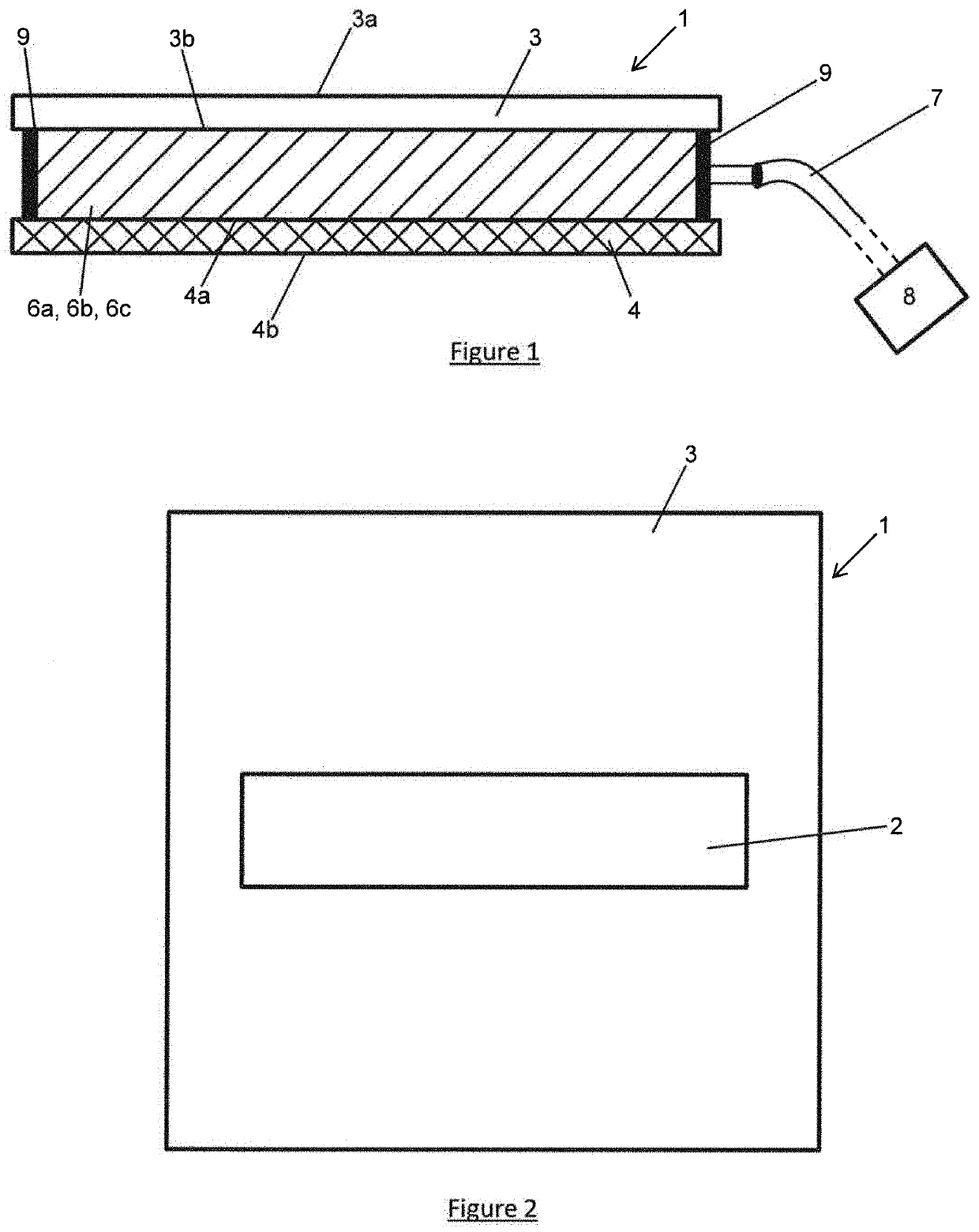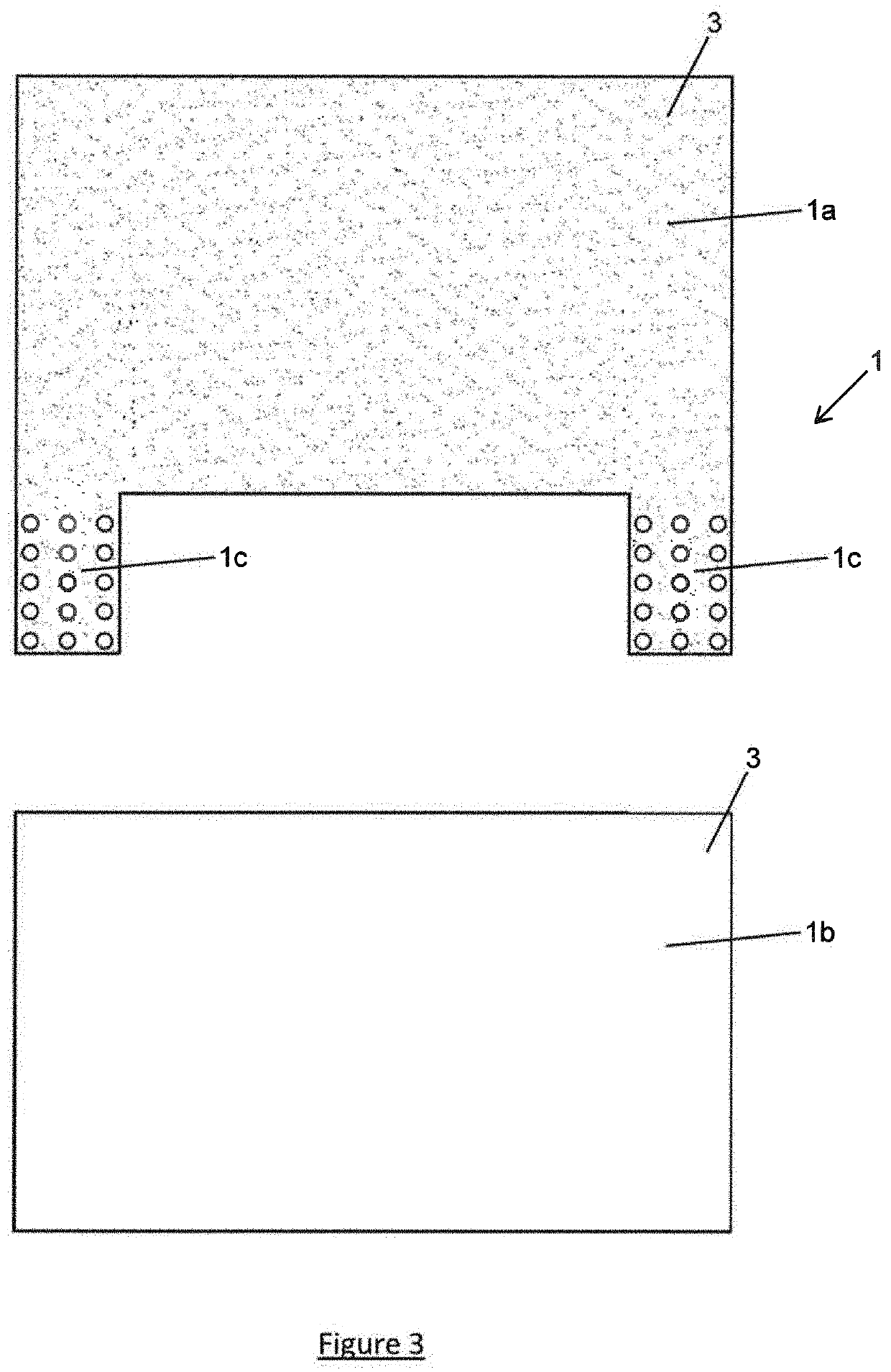Assembly comprising a suction device suitable for being placed on a wound and/or an incision
a suction device and suction tube technology, applied in the field of drapes, can solve the problems of infection of the wall and/or ineffective disinfection and/or drying of the operating site, and inability to completely clean and dry the operating site, and achieve the effect of quick collection of a large volume of blood
- Summary
- Abstract
- Description
- Claims
- Application Information
AI Technical Summary
Benefits of technology
Problems solved by technology
Method used
Image
Examples
first embodiment
[0058]In a first embodiment, the suctioning zone 6a is presented in the form of a multiperforated catheter maze 63a. These catheters 63a are known to a person skilled in the art and can be made of materials such as polyamide or also polyurethane. The number of multiperforated catheters 63a can vary according to the necessary suctioning capacity. The suctioning zone 6a can, for example, comprise between 1 and 100 catheters.
[0059]FIG. 6 illustrates such a catheter 63a. In this embodiment, the ducts of each of the catheters 63a constitute the cavities 61a wherein the blood of the patient P will be suctioned. The suctioning depression created by the system 8 will suction the blood through perforations 62a so as to recover it in the ducts 61a and then transfer it to said recovery system 8.
second embodiment
[0060]A second embodiment represented in FIG. 7, has a suctioning zone 6b being presented in the form of a multiperforated foam. This foam comprises cavities 61b, preferable arranged uniformly in the whole of the foam 6b. In the same manner as in the preceding embodiment, the suctioning depression created by the system 8 will suction the blood into the cavities 61b through the foam 62b to then send it to said blood recovery system 8.
[0061]In an alternative embodiment, the suctioning zone 6c can be composed of a catheter grid network 63c (represented in FIG. 8). The grids can be interconnected with one another or be separated. In the last case, each of the grids will be connected independently to the recovery system 8. Similarly to that described in the first embodiment, the ducts of the catheters 63c constitute the cavities 61c wherein the suctioned blood is housed. When the suctioning depression is applied using the system 8, the blood of the patient P is suctioned then retransferr...
PUM
 Login to View More
Login to View More Abstract
Description
Claims
Application Information
 Login to View More
Login to View More - R&D
- Intellectual Property
- Life Sciences
- Materials
- Tech Scout
- Unparalleled Data Quality
- Higher Quality Content
- 60% Fewer Hallucinations
Browse by: Latest US Patents, China's latest patents, Technical Efficacy Thesaurus, Application Domain, Technology Topic, Popular Technical Reports.
© 2025 PatSnap. All rights reserved.Legal|Privacy policy|Modern Slavery Act Transparency Statement|Sitemap|About US| Contact US: help@patsnap.com



